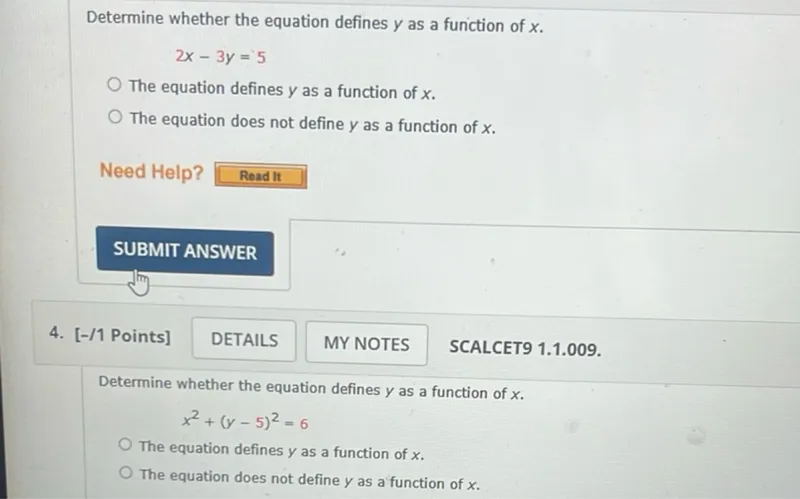Questions: Determine whether the equation defines y as a function of x. 2x-3y=5 The equation defines y as a function of x. The equation does not define y as a function of x. Determine whether the equation defines y as a function of x. x^2+(y-5)^2=6 The equation defines y as a function of x. The equation does not define y as a function of x.

Transcript text: Determine whether the equation defines $y$ as a function of $x$.
\[
2 x-3 y=5
\]
The equation defines $y$ as a function of $x$.
The equation does not define $y$ as a function of $x$.
Determine whether the equation defines $y$ as a function of $x$.
\[
x^{2}+(y-5)^{2}=6
\]
The equation defines $y$ as a function of $x$.
The equation does not define $y$ as a function of $x$.





